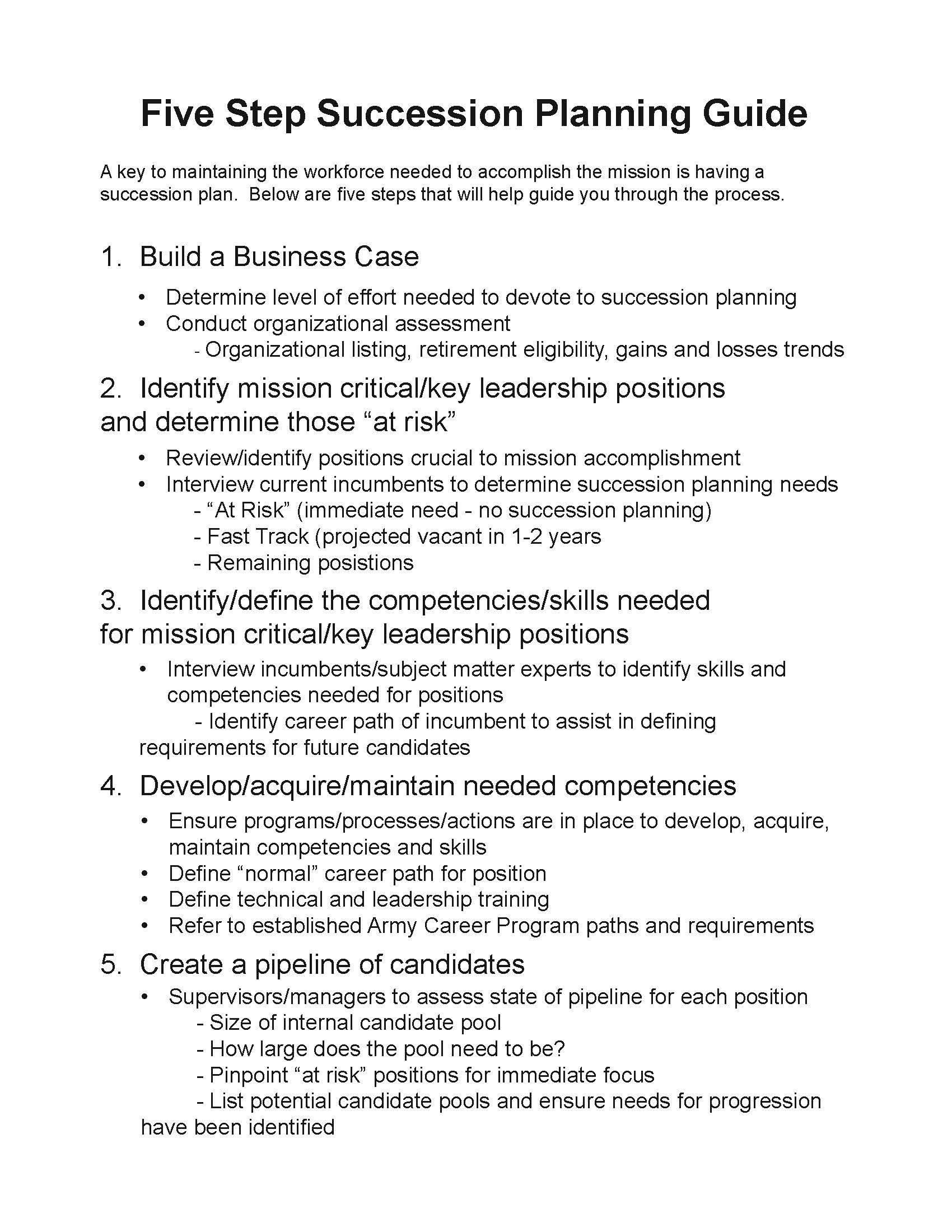Each year, U.S. Army Engineering and Support Center, Huntsville leadership conducts a strategic off-site that is designed to help shape actions for the coming year.
During the off-site Jan. 19-21, the group discussed succession planning as a way to meet staffing challenges during transition, as well as various other topics.

A key element of transition is succession planning. It helps speed the process of hiring against vacancies if a succession plan is in place.
About half of Huntsville Center’s 900 or so employees are over 50 years old and 20 percent of those are eligible for retirement or early voluntary retirement. To get ahead on replacing employees who decide to retire, supervisors can review position descriptions and make any necessary changes to them, develop vacancy announcements and position questionnaires that they have on-hand for when the time comes.
Blaine Guidry, chief of the Geosciences Branch, presented what he sees as a problem in his section: being able to recruit and keep younger employees. His Operation Solarium briefing focused on employees in the Millennial age group, those born between 1982-2000.
“Between 2012 and 2015 there have been over 12 million Millennials enter the workforce,” Guidry said. “Huntsville has only added five.” He also noted that the number of employees under age 39 has been steadily decreasing since 2012.
But the problem is not specific to hiring Millennials. As the Baby Boom (born between 1946 and 1964) generation retires, they will need to be replaced. He suggested supervisors look at what the younger employees, including Millennials and those in Generation X, 1965-1981, are looking for in an organization, and that supervisors engage the younger employees to get answers.
“Huntsville needs a healthy level of multi-generational diversity to fulfill its mission in 2025,” Guidry said.
According to Jen Haapoja, chief of Human Capital Management in the Business Management Office, the most common grade at Huntsville Center is GS-13, and there has been an 8.3 percent increase in GS-13s over four years, from 305 to 388.
Guidry suggested supervisors might want to look at the Integrated Manning Document to identify those positions that could be converted to developmental positions that start at a lower grade. Individuals graduating from college will not initially qualify for the GS-13 position.
Areas identified for emphasis by Haapoja include the low representation rates for Asian Pacific Islander and Hispanic populations, the high turnover rate for contracting specialists and the generational gaps.
Areas of concern show that the rate of gain for the under 30 workforce is significantly and consistently less than the rate of loss, Haapoja said. “The rate of gain for the under 30 workforce is less than or equal to the gain for the 60+ workforce for the past two years.”
To address these areas of concern, Haapoja recommends annually conducting succession planning by identifying critical and key leadership positions and determining those at risk and identifying and defining competencies and skills that are needed for critical and key leadership positions. She suggested building the bench using programs such as Pathways and SMART programs or using reemployed annuitants for mentoring and training junior employees. Other ways to recruit and retain employees may be targeting recruitment by way of career fairs, publications, advertisements, etc., and placing more emphasis on exit interviews and surveys to learn why employees are leaving.
As part of succession planning, when hiring, supervisors need to plan before submitting the requests for personnel action, Haapoja said. “This cuts down on pre-announcement time, prevents re-work and speeds the hiring process, based on an 80-day hiring model.”
Another area where the hiring action could be delayed is allowing too much time for the vacancy to be open. This can lead to applicant influx which increases rating, interview and certificate return time, Haapoja said. She also said having the interview process and questions planned in advance can help meet the 15-day standard.
Hiring and retaining employees are key to maintaining the level of workforce needed to complete the Huntsville Center mission.
“We need to do succession planning,” said Col. Robert Ruch, Huntsville Center commander. “Succession planning should be a continuous process, especially during times of transition. Having a plan in place will help manage the workforce so Huntsville Center can meet the staffing challenges of the future and ensure we continue to meet our mission.”